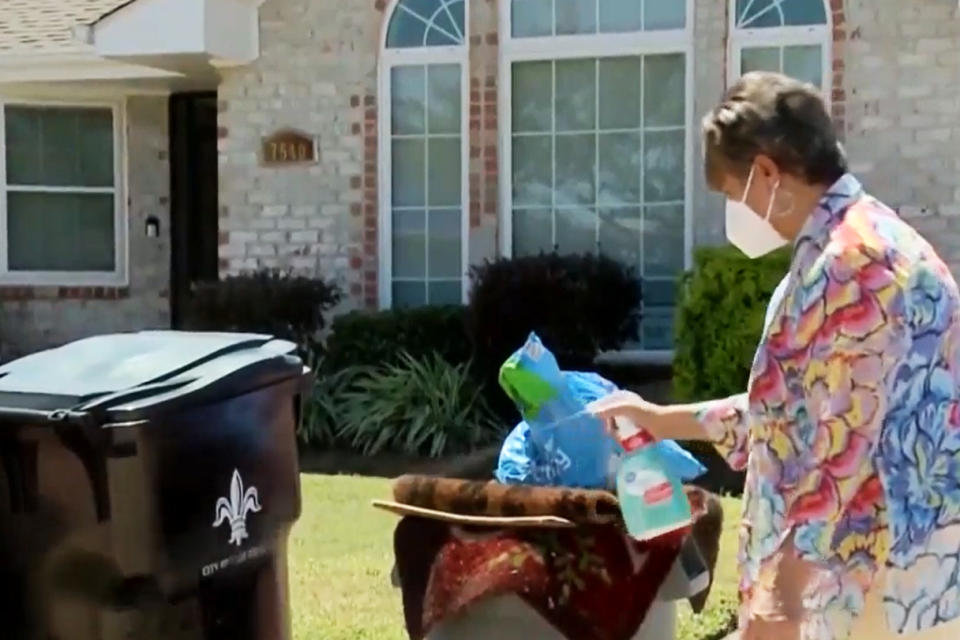Stench of Hurricane Ida lingers as New Orleans residents go weeks without trash pickup

Sixteen days after Hurricane Ida made landfall in New Orleans, about one-third of the city’s residents — approximately 130,000 people — have gone without trash pickup.
Hurricane debris and weeks of garbage have created a putrid smell in many parts of the city, as soaring temperatures and rain exacerbate the stench and spoiled food some residents dumped from refrigerators after Ida still sits on the curb.
Mayor LaToya Cantrell acknowledged the problem in an address she posted online Monday.
“The No. 1 concern that I know that residents are having is about trash, trash collection, trash pickup, the smell and when is my garbage going to be removed,” she said.

Cantrell said the city is facing several obstacles as it tries to clear the trash, including a shortage of sanitation workers, overflowing landfills and a shortage of trucks.
“I know we had issues pre-Ida,” the mayor said. “I know that it’s frustrating. At the same time, I am going to ask for your patience.”
Resident Rebecca Jostes told NOLA.com her trash full of spoiled food and hurricane debris has yet to be touched.
“We have dirty diapers, in the heat, in the sun,” she said. “Our trash is getting pretty fragrant.”
The city estimated it has 200,000 cubic yards, or 54,000 tons, of debris to clear from the hurricane and has only been able to remove 5 percent of it, Ramsey Green, the city’s deputy chief administrative officer of infrastructure, said in a news conference Monday. Green suggested people prioritize what they put out for pickup as trucks struggle to keep up with the massive increase in garbage.
“Our trucks, normally it would be four or five blocks before they have to go drop things off at the landfill. They are doing it after one block now,” Green said.
Director of Sanitation Matt Torri said at the same news conference that the city hopes to finish its “first pass” through every block by this week.
Plenty of trash is being left behind after the first pass, as workers can’t get it all, and Cantrell said it has been leading to conflict between residents and the sanitation workers.
“The way to respond to this ... is not to physically or verbally assault the people who are picking up trash in our community throughout our city,” she said, adding that police responded to multiple sanitation-related incidents over the weekend.
Still, the sanitation situation in New Orleans is “outrageous,” said Charisma Acey, associate professor of city and regional planning at University of California, Berkeley.
“It may not seem to be a big deal, but waste management and sanitation is a core city function,” Acey said.
Acey said trash pileup attracts rodents and vermin and increases risk to bacteria exposure, and the odor can cause headaches and other physical symptoms. Hurricane debris could also contain hazardous waste, proving to be dangerous as it lingers in residents’ neighborhoods. During a storm of Ida’s magnitude, “God knows what is moving through the streets,” Acey said, adding that cities should be better prepared for cleanup.
That it is happening in a majority-Black city is no surprise as so much of environmental racism concerns waste-management issues, Acey said, and these types of waste overflows more commonly happen in communities of color.
While the city tries to move as quickly as it can, contracting more trash removal, residents are left with the smell.
"I have the flies, I have the gnats, and I guess sooner or later we'll have the maggots," New Orleans East homeowner Embra Bridges told NBC affiliate WDSU of New Orleans. "The odor is horrendous, and when I smell it, I get nauseous, so I have to keep my mask on."

